
Oral health is a crucial aspect of your kid’s overall health and physical, and mental well-being. Having healthy and strong teeth and gums should be your top priority, especially when it comes to children (1). As dedicated parents, imbibing good oral hygiene habits in your children is essential. Poor dental health can lead to a series of dental problems in children.
Children are more prone to dental problems than adults due to poor oral hygiene, and unhealthy eating habits. Thus, it is your duty as parents to ensure a child’s oral health is protected by teaching them proper brushing and flossing techniques and limiting the intake of sugary foods and drinks. This article will explore common dental problems in children and effective solutions for each. So buckle up and scroll down!
In This Article
- Top 11 Common Dental Problems in Children
- Why is Dental Hygiene Important in Children?
- How Frequently Should You Take Your Kid to the Dentist?
- FAQ’s
Top 11 Common Dental Problems in Children
Here is a comprehensive list of 11 of the most common dental problems in children:
1. Tooth Decay
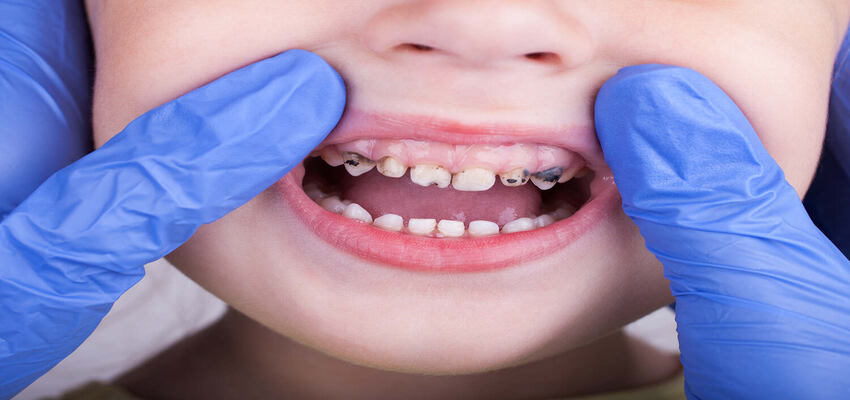
Tooth decay is a prevalent, and common dental problem in children that develops due to increased bacterial and plaque accumulation. This secretes harmful acids that erode the enamel layer causing decay and prominent cavities (2a).
Solution
As parents, you must guide and supervise your children while brushing their teeth. Inculcate good oral hygiene practices like brushing twice with fluoride toothpaste, and flossing once daily to prevent or manage tooth decay (2b). Furthermore, avoid giving them sugary foods and drinks, and take them to regular dental visits once every six months.
2. Bad Breath
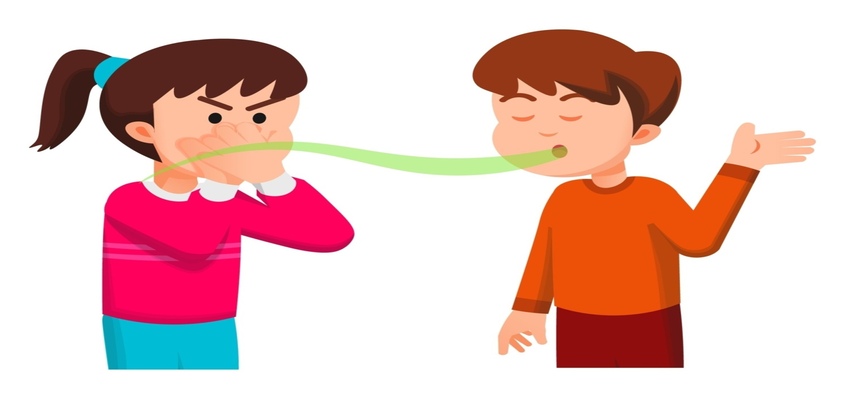
Bad breath, or halitosis usually develops when bacteria feed on food debris inside the mouth causing foul-smelling by-products like hydrogen sulfide (3). Persistent and prolonged bad breath can be an indicator that something is wrong.
Solution
Make your child brush and floss their teeth daily. Use an antibacterial mouthwash to reduce bad breath in addition to brushing and scraping their tongue thoroughly (4).
3. Gum Disease
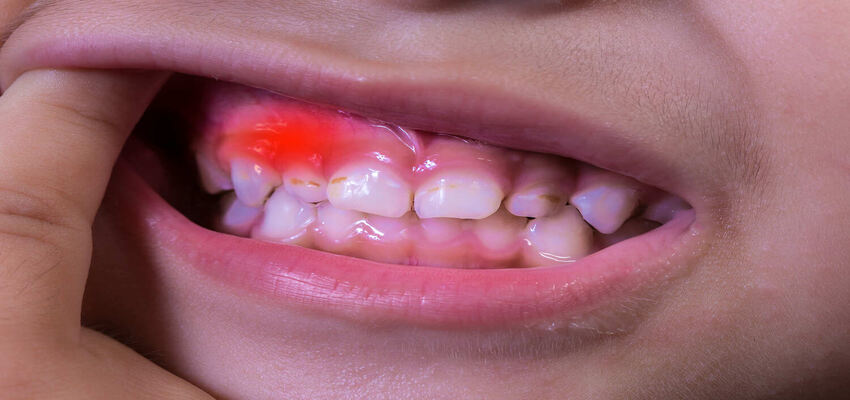
Gum disease can occur even in children as a result of damage to the gums and the underlying jawbone. Early gum disease may manifest as red, bleeding, inflamed, swollen gums with bad breath. It may be more aggressive in children with poor oral hygiene (5).
Solution
This involves regular brushing and flossing of the mouth, regular dental visits, and professional cleanings using ultrasonic instruments (6).
4. Teeth Grinding

Teeth grinding (bruxism) is an involuntary clenching of the teeth that may result due to discrepancy during teeth eruption (7a). Once they erupt, children may stop grinding their teeth, but some may continue this habit and erode their teeth enamel. This can result in tooth decay or increased tooth sensitivity.
Solution
Consult the pediatric dentists who will fabricate mouthguards for your children. These are oral appliances to be worn for a prescribed time to protect the teeth from grinding (7b).
5. Teeth Sensitivity

Tooth sensitivity to hot and cold foods and sweets can affect even children. This can cause great discomfort that can negatively impact your child’s focus and routine life. Tooth sensitivity can result due to tooth decay, grinding, enamel erosion, and orthodontic treatment.
Solution
Consult the pediatric dentist right away who can treat the root cause of sensitivity. Furthermore, the dentist may prescribe a special toothpaste to manage sensitivity.
6. Thumb Sucking

Most children are bound to develop thumb-sucking habits as a means to soothe anxiety or fear. They tend to outgrow this habit after some time, but some may continue to exhibit thumb-sucking habits beyond adolescence (8a).
Solution
As a parent, it is essential to educate your children to quit the habit at an early stage. If the habit persists contact a pediatric dentist for further help. They would recommend techniques like covering the thumb with a bitter substance or bandaging it (8b).
7. Tongue Thrusting
The tongue-thrusting reflex may be normal in infants who breastfeed. But prolonged habit into childhood may be due to genetics or thumb-sucking habits. It makes the tongue push forward causing tongue thrust.
Solution
Consult a pediatric dentist for further evaluation and management. They may suggest speech and language therapy, or orofacial myofunctional therapy. These therapies focus on training the tongue and oral muscles to adopt a new swallowing pattern.
8. Loss of Baby Teeth
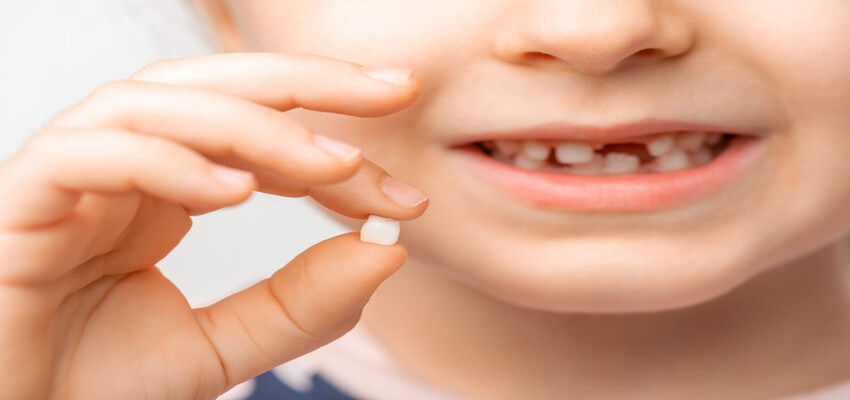
Losing a baby tooth is a time of excitement since a new permanent tooth may erupt in its place. But this may not always come with ease since it may be accompanied by pain and discomfort. Also, losing a tooth early can be a cause of concern since it may lead to misalignment and crowding of permanent teeth in the future, and negatively impact speech and phonation (9).
Solution
Consult a pediatric dentist to evaluate the mobile baby tooth and save it with the help of splints if it tends to loosen at an early stage (before the age of 6 or 7) before getting a permanent tooth.
9. Misaligned Teeth or Malocclusion
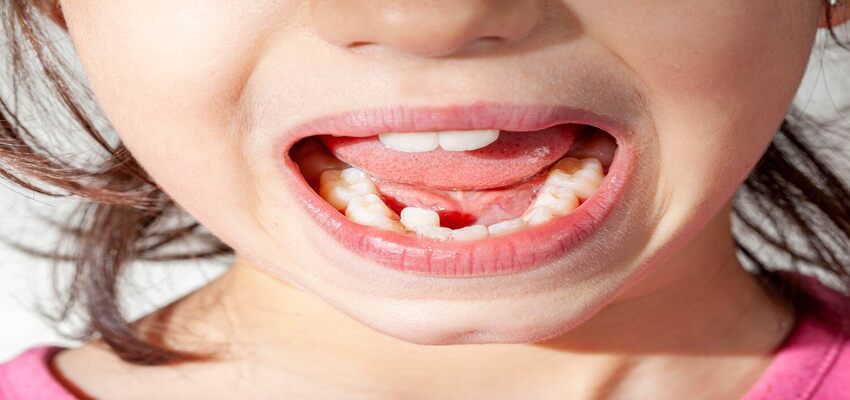
Misaligned baby teeth are not a cause of concern since they may straighten themselves. However crooked, and crowded permanent teeth cannot do so and require treatment. Premature loss of baby teeth can be a major cause of misaligned permanent dentition. This may affect the facial aesthetics and make the teeth prone to dental problems like tooth decay (10).
Solution
Consult a pediatric dentist who may suggest getting orthodontic braces to correct misalignment.
10. Tooth Discoloration
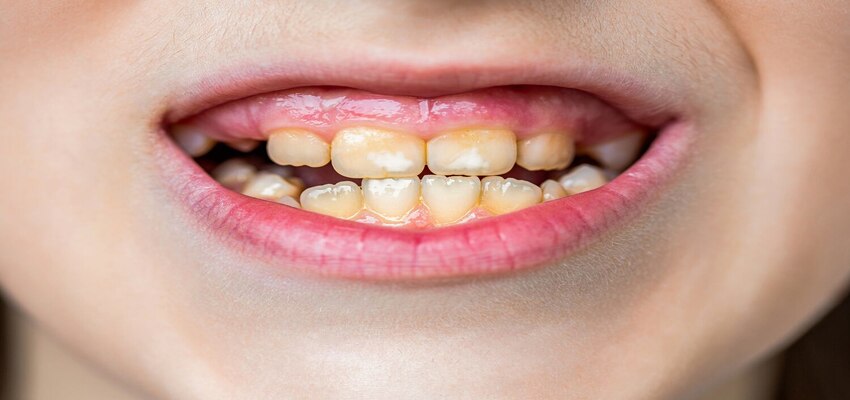
Unhealthy eating habits, poor oral hygiene, and fluorosis can lead to tooth discoloration in children that appear as pale yellow to brown stains (11).
Solution
Professional teeth cleaning and polishing can help remove extrinsic stains caused by certain foods and plaque deposits. Fluorosis can be managed by a pediatric dentist through teeth whitening, dental bonding, or porcelain veneers in severe cases.
11. Lip Biting
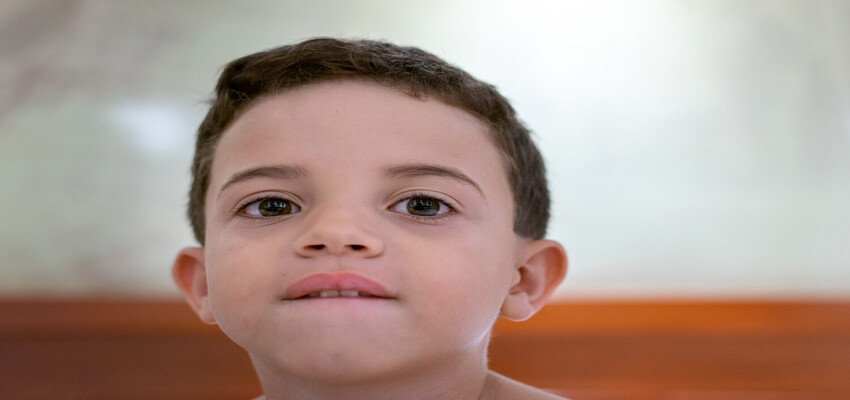
Lip biting can be a common habit in children which may often be unintentional or due to stress. Chronic lip biting can have a psychological or mental health issue to it.
Solution
They tend to grasp bad habits like thumb sucking and lip biting habits to cope with stress and anxiety which should be discouraged after a certain age. Try to explain to your child and break this habit as soon as you notice it. Consult a pediatric dentist for further evaluation (12).
Why is Dental Hygiene Important in Children?

Dental hygiene is an essential part of overall well-being, especially when it comes to children. Dental hygiene in children is important since it helps keep primary teeth strong and healthy which acts as a strong foundation for permanent teeth. Healthy primary teeth pave the way for healthy permanent teeth in the future.
Poor oral hygiene, and unhealthy eating habits in children can increase their risk of several dental problems like tooth decay, cavities, bad breath, gum disease, and premature loss of teeth. Thus, it is important to inculcate good dental hygiene practices in children that go a long way into their adulthood.
How Frequently Should You Take Your Kid to The Dentist?

Regular dental visits for children are crucial since dentists can keep a check on their oral health. The first dental visit should be as soon as their first tooth erupts which is around 6 to 7 months of age. Kids should visit a dentist at least once in six months to evaluate their oral health.
Dental problems in children are common owing to poor oral hygiene and unhealthy eating habits. As a parent it is your responsibility to take charge of your child’s dental health by imbibing good brushing and flossing habits in them, and keeping a check on what they eat. Remember to take them to the dentist regularly. Together you can make tremendous changes to your child’s oral health and improve their overall well-being to reduce the risk of dental problems in children.
FAQ’s
1. What Are The Most Common Dental Problems For Children?
Children are prone to dental problems due to poor oral hygiene and unhealthy eating habits. The most common dental problems for children are tooth decay, premature tooth loss, gum disease, dental trauma, and tooth grinding.
2. What Are The Teeth Problems With 5-Year-Olds?
Teeth problems with 5-year-olds are tooth decay, cavities, bad breath, gum disease, crooked and misaligned teeth, and tooth grinding. These problems may be more common among children than adults due to poor oral hygiene, unhealthy eating habits, and increased risk of falls and accidents.
3. What is The Enamel Condition in Children?
The enamel in children is thin and prone to develop abnormalities. Enamel hypoplasia is a common enamel condition in children. It is characterized by a reduction in the tooth enamel thickness or poor quality tooth enamel due to low mineral content.
References
- The importance of promoting oral health in schools: a pilot study – [https://www.ncbi.nlm.nih.gov/pmc/articles/PMC10141745/]
- Tooth decay: Learn More – Preventing tooth decay in children and teenagers – [https://www.ncbi.nlm.nih.gov/books/NBK279515/]
- Association between halitosis and mouth breathing in children – [https://www.ncbi.nlm.nih.gov/pmc/articles/PMC3129960/]
- Halitosis: From diagnosis to management – [https://www.ncbi.nlm.nih.gov/pmc/articles/PMC3633265/]
- Gingival Diseases in Childhood – A Review – [https://www.ncbi.nlm.nih.gov/pmc/articles/PMC4253289/]
- Common Periodontal Diseases of Children and Adolescents – [https://www.ncbi.nlm.nih.gov/pmc/articles/PMC4098882/]
- Sleep Bruxism in Children: Etiology, Diagnosis, and Treatment—A Literature Review – [https://www.ncbi.nlm.nih.gov/pmc/articles/PMC8471284/]
- Thumb Sucking – [https://www.ncbi.nlm.nih.gov/books/NBK556112/]
- Premature Loss of Deciduous Teeth as a Symptom of Systemic Disease: A Narrative Literature Review – [https://www.ncbi.nlm.nih.gov/pmc/articles/PMC8953685/]
- Common dental diseases in children and malocclusion – [https://www.ncbi.nlm.nih.gov/pmc/articles/PMC5944594/]
- Shades of Decay: The Meanings of Tooth Discoloration and Deterioration to Mexican Immigrant Caregivers of Young Children – [https://www.ncbi.nlm.nih.gov/pmc/articles/PMC4537173/]
- Habitual biting of oral mucosa: A conservative treatment approach – [https://www.ncbi.nlm.nih.gov/pmc/articles/PMC3793567/]
